What color is the moon?
The question put up in the headline seems to be very strange. After all, everyone has seen the moon and knows its color. However, on the Internet, periodically there are carriers of ideas about a worldwide conspiracy that hides the true color of our natural satellite. The discourse on the color of the moon is part of the immense theme of the "lunar conspiracy." Some people think that the cement color of the surface, which is present in the Apollo program astronauts, is not true, and the “actually” color is different.
The new aggravation of conspiracy theories caused the first pictures of the Chinese descent vehicle Chang'e 3 and the lunar rover Yutu. On the very first frames from the surface, the Moon turned out to be more similar to Mars than to the silver-gray plain, from pictures of the 60s and 70s.

')
Not only numerous homegrown whistleblowers rushed to discuss this topic, but also incompetent journalists of some popular media.
Let's try to figure out what the secrets are with this Moon.
The main postulate of conspiracy theories associated with the moon color is: “ NASA made a mistake in determining color, therefore Apollo made a gray surface during the imitation of landing. In fact, the moon is brown, and now NASA is hiding all its color images . ”
From a similar point of view, I met before the landing of the Chinese lunar rover, and it is quite simple to refute it:
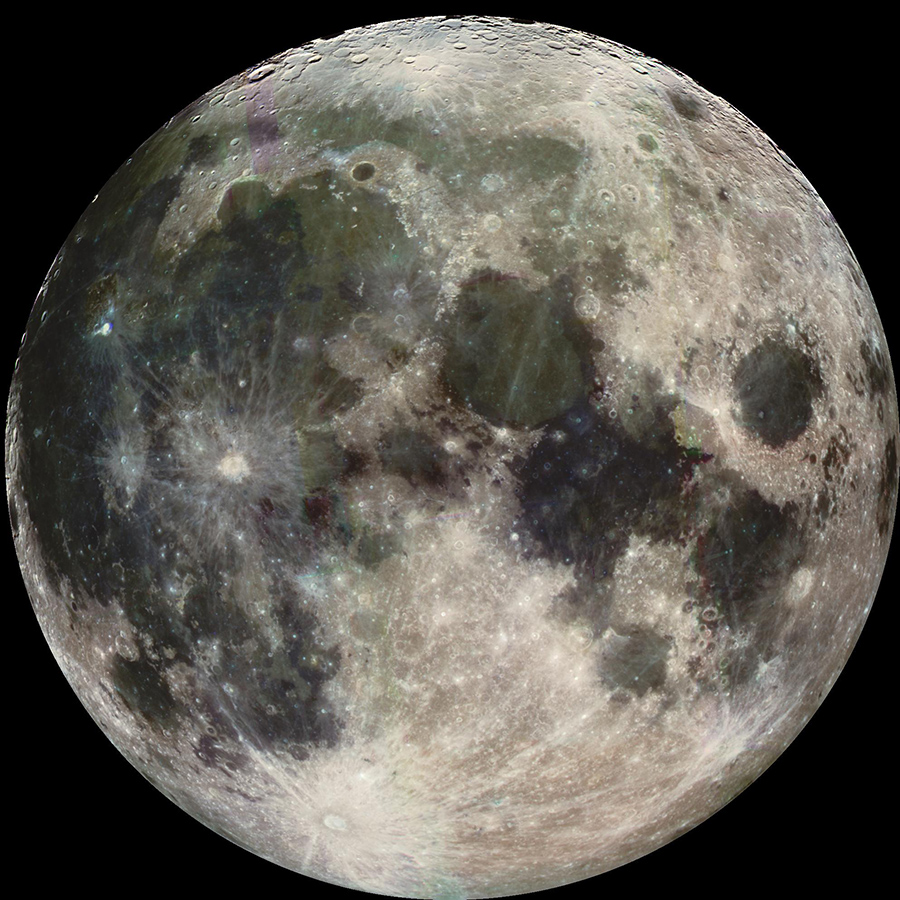
This is a snapshot in enhanced colors, from the Galilleo spacecraft, taken in 1992, at the beginning of its long journey to Jupiter. Already this frame is enough to understand the obvious thing - the moon is different, and NASA does not hide it.
Our natural satellite experienced a turbulent geological history: volcanic eruptions raged on it, giant lava seas poured in, powerful explosions generated by the strikes of asteroids and comets occurred. All this significantly varied the surface.
Modern geological maps obtained thanks to numerous satellites of the USA, Japan, India, and China show a variegated variety of surfaces:
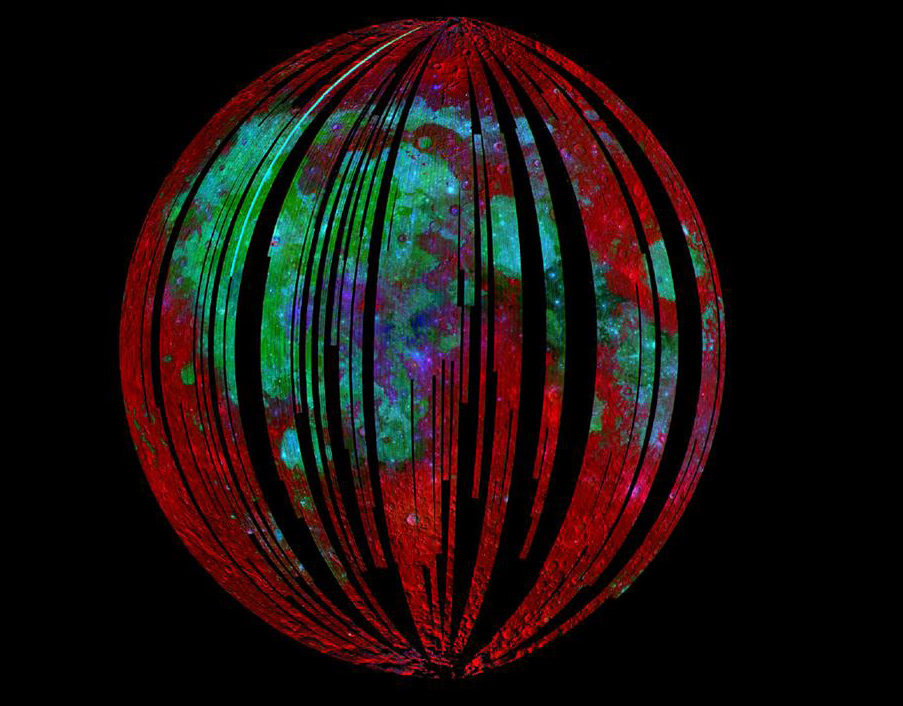
Of course, different geological rocks have a different composition and, as a result, a different color. The problem of the casual observer is that the entire surface is covered with a uniform regolith, which “blurs” the color and sets one tone on almost the entire area of the Moon.
However, some astronomical imaging and postprocessing techniques are available today that reveal hidden surface differences:
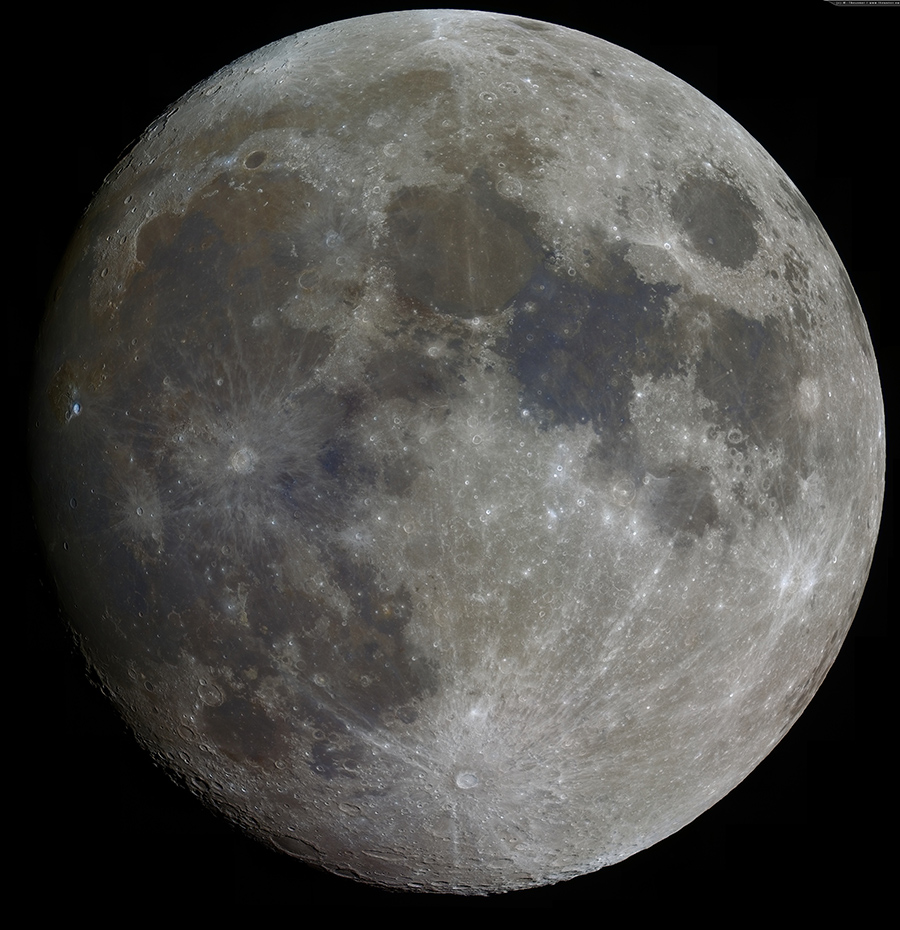
Here is a snapshot of the astrophotographer Michael Theusner , which is produced in multi-channel RGB mode and subjected to processing by the LRGB algorithm. The essence of this technique is that the Moon (or any other astronomical object) is first removed alternately in three color channels (red, blue and green), and then each channel is subjected to separate processing, in order to express the color brightness. Astrocamera with a set of filters, a simple telescope and photoshop are available to almost everyone, so there is no conspiracy to hide the color of the moon. But it will not be the color that our eyes see.
Let's go back to the moon in the 70s.
Most of the published color photographs from the Hasselblad 70-mm camera show us the uniform “cement” color of the moon.
At the same time, samples delivered to Earth have a richer palette. And this is typical not only for Soviet supplies from the Luna-16:

But also for the American collection:

However, they have a richer collection, there are both brown, and gray, and bluish exhibits.
The difference between observations on Earth and on the Moon is that the transportation and storage of these finds cleared them of the surface dust layer. Samples from the "Luna-16" were generally mined from a depth of about 30 cm. At the same time, during the surveys in the laboratories, we observe finds in a different light and in the presence of air, which affects the scattering of light.
My phrase about moon dust may seem doubtful to someone. After all, everyone knows that there is a vacuum on the Moon, therefore dust storms, like on Mars, cannot be there. But there are other physical effects that raise dust above the surface. There is an atmosphere there, but quite thin, about the same height as the International Space Station.
The glow of dust in the lunar sky was observed from the surface by both automatic descending Surveyor probes and Apollo astronauts:

The results of these observations formed the basis of the scientific program of the new NASA LADEE spacecraft, whose name means: Lunar Atmosphere and Dust Environment Explorer. Its task is to study lunar dust at an altitude of 200 km and 50 km above the surface.
Thus, the Moon is gray for about the same reason that Mars is red because of the covering monochrome dust. Only on Mars the reddish dust raises storms, and on the Moon the gray ones are blows of meteorites and static electricity.
One of the reasons that prevent us from seeing the color of the moon in astronauts' pictures, it seems to me is a slight overexposure. If we reduce the brightness and see the place where the surface layer is disturbed, we can see the difference in color. For example, if you look at the trampled area around the Apollo 11 descent module, you will see brown soil:

Subsequent missions took with them so-called. “Gnomon” is a color indicator that allows to better interpret the color of the surface:

If you look at it in the museum, you can see that the colors on Earth look brighter:
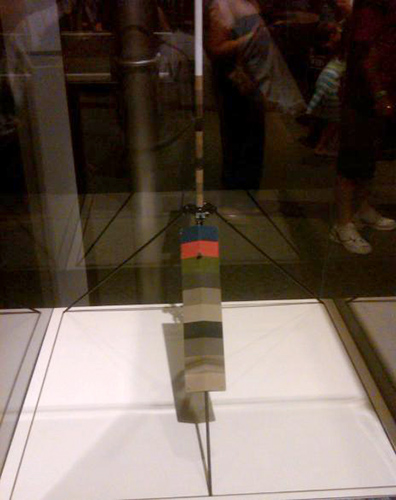
Now let's look at another shot, this time with Apollo 17, which once again confirms the absurdity of the charges in the conscious "discoloration" of the Moon:
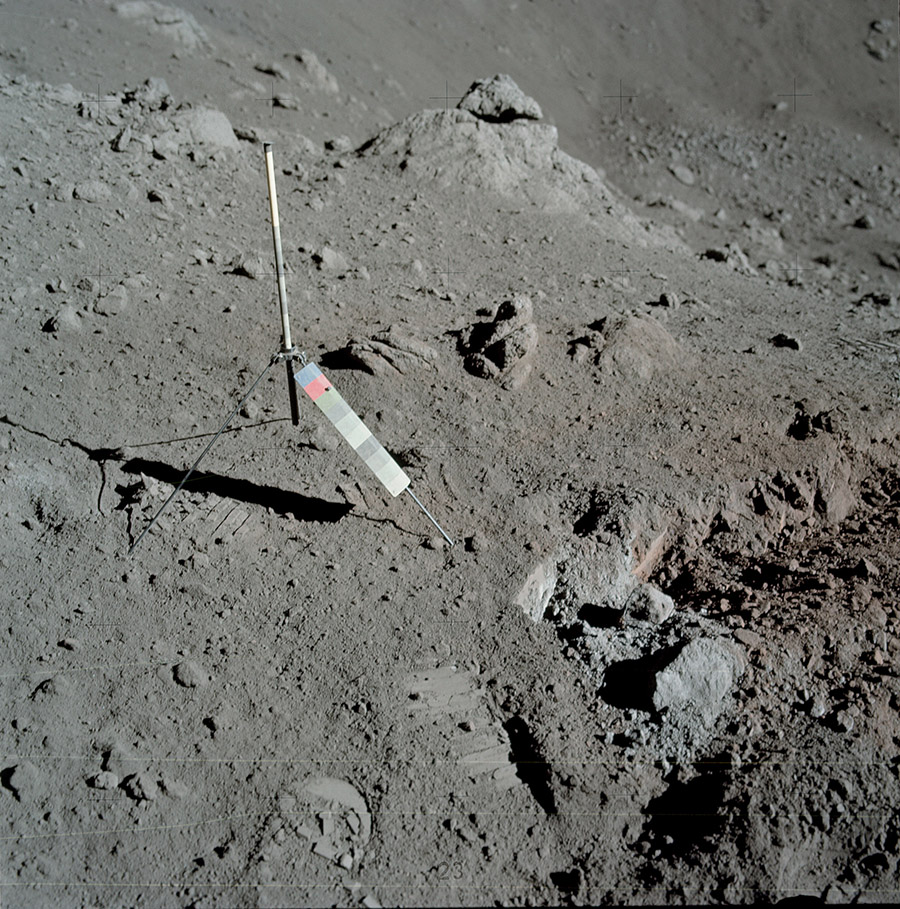
You can note that the dug soil has a reddish tint. Now, if we reduce the intensity of illumination, we will see in more detail the color differences of lunar geology:
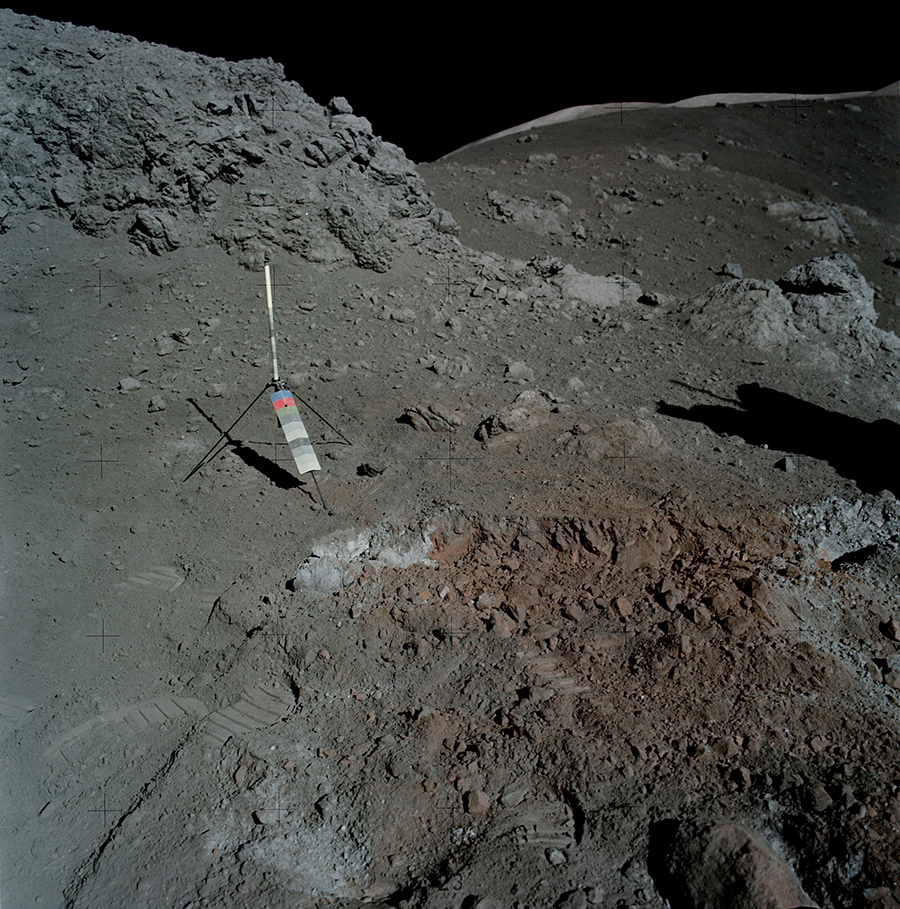
By the way, these photos in the NASA archive are not accidentally called “orange soil”. In the original photo, the color does not reach orange, and after darkening, and the color of the gnomon markers are close to those that are visible on Earth, and the surface gets more shades. Probably something like this, saw their eyes astronauts.
The myth about conscious discoloration occurred when some illiterate conspiracy scientist compared the color of the surface and its reflection on the astronaut's helmet glass:
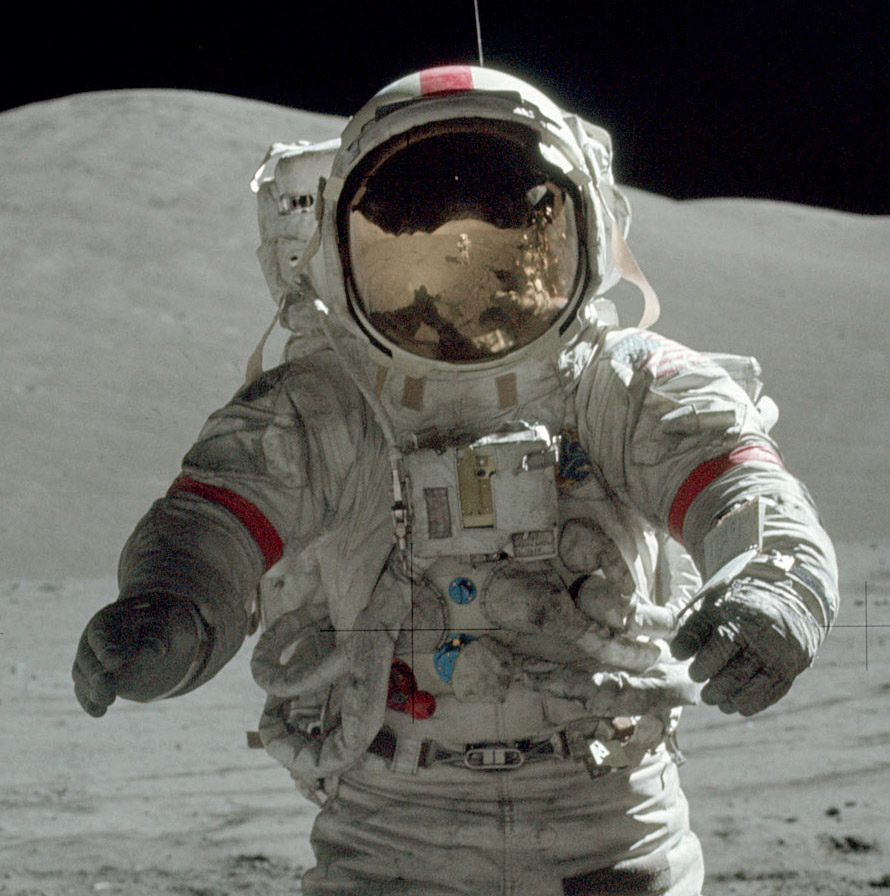
But he was not smart enough to understand that the glass was tinted, and the reflective coating on the helmet was gold. Therefore, a change in the color of the reflected image is natural. In these helmets, the astronauts were still in training, and there the brown tinting is clearly visible, only the face is not covered by a gilded mirror filter:

Studying archival images with Apollo or modern with Chang'e-3, you should take into account that the color of the surface is also affected by the angle of incidence of the sun's rays and camera settings. Here is a simple example when several frames of one film on one camera have different shades:
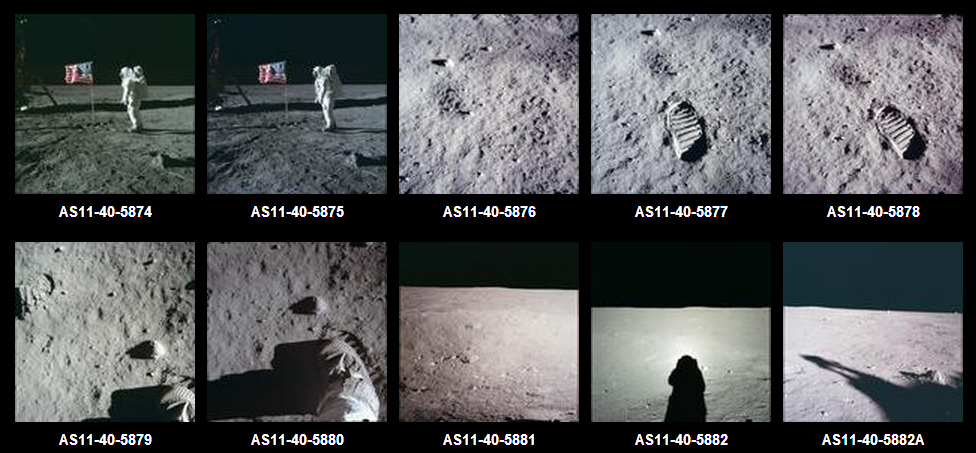
On the variability of the color of the lunar surface, depending on the angle of illumination, Armstrong himself said:
In his interview, he does not hide the observed brown shade of the moon.
Now that we were shown the Chinese vehicles before going into a two-week hibernation. The first shots in pink colors turned out to be due to the fact that the cameras were not corny white balance. This is an option that all digital camera owners should be aware of. Shooting modes: “daylight”, “cloudy”, “fluorescent lamp”, “incandescent lamp”, “flash” - these are exactly the white balance adjustment modes. It is enough to put the wrong mode and now the pictures began to appear either orange or in blue shades. The Chinese did not set up the camera on the “Moon” mode, so they made the first shots at random. Later we tuned in and continued shooting in colors that are not very different from Apollo frames:

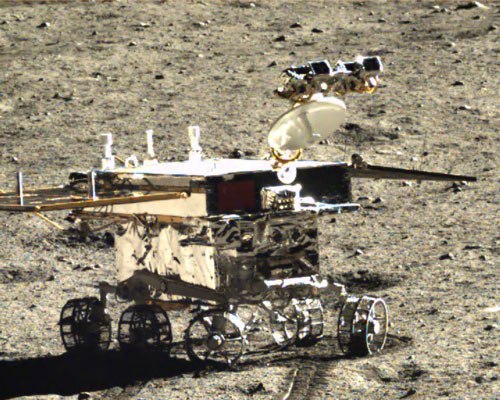
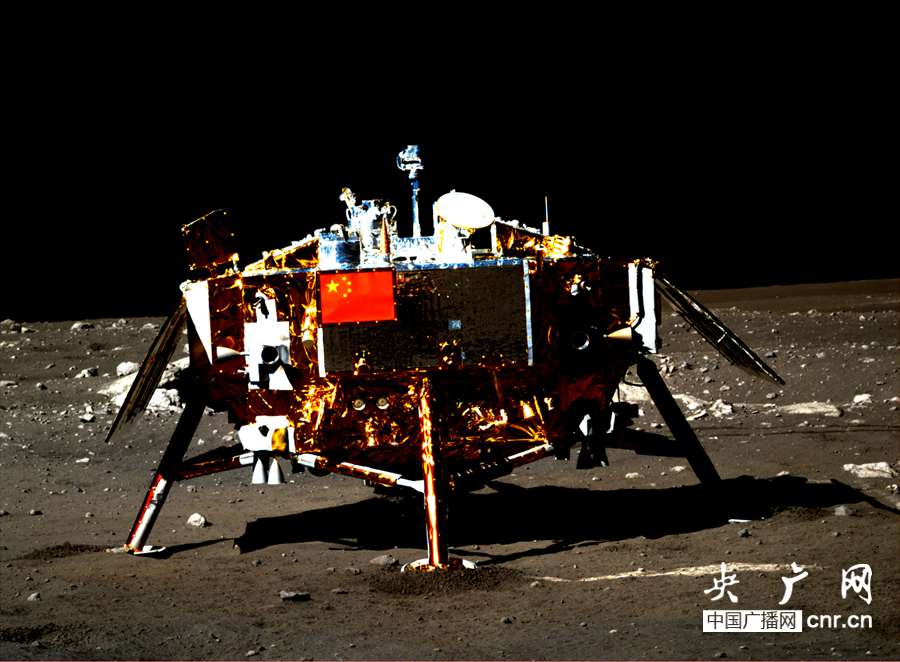

Thus, the “lunar color plot” is nothing more than a fallacy, based on ignorance of trivial things and the desire to feel like a snooping cover without getting up from the sofa.
I think the current Chinese expedition will help us to know our space neighbor even better, and will more than once confirm the absurdity of the idea of a NASA lunar conspiracy. Unfortunately, the media coverage of the expedition leaves much to be desired. So far, only screenshots from Chinese news bulletins are available to us. It seems that CNSA does not want to disseminate information about its activities by any means. I hope this will change at least in the future.
The new aggravation of conspiracy theories caused the first pictures of the Chinese descent vehicle Chang'e 3 and the lunar rover Yutu. On the very first frames from the surface, the Moon turned out to be more similar to Mars than to the silver-gray plain, from pictures of the 60s and 70s.

')
Not only numerous homegrown whistleblowers rushed to discuss this topic, but also incompetent journalists of some popular media.
Let's try to figure out what the secrets are with this Moon.
The main postulate of conspiracy theories associated with the moon color is: “ NASA made a mistake in determining color, therefore Apollo made a gray surface during the imitation of landing. In fact, the moon is brown, and now NASA is hiding all its color images . ”
From a similar point of view, I met before the landing of the Chinese lunar rover, and it is quite simple to refute it:

This is a snapshot in enhanced colors, from the Galilleo spacecraft, taken in 1992, at the beginning of its long journey to Jupiter. Already this frame is enough to understand the obvious thing - the moon is different, and NASA does not hide it.
Our natural satellite experienced a turbulent geological history: volcanic eruptions raged on it, giant lava seas poured in, powerful explosions generated by the strikes of asteroids and comets occurred. All this significantly varied the surface.
Modern geological maps obtained thanks to numerous satellites of the USA, Japan, India, and China show a variegated variety of surfaces:

Of course, different geological rocks have a different composition and, as a result, a different color. The problem of the casual observer is that the entire surface is covered with a uniform regolith, which “blurs” the color and sets one tone on almost the entire area of the Moon.
However, some astronomical imaging and postprocessing techniques are available today that reveal hidden surface differences:

Here is a snapshot of the astrophotographer Michael Theusner , which is produced in multi-channel RGB mode and subjected to processing by the LRGB algorithm. The essence of this technique is that the Moon (or any other astronomical object) is first removed alternately in three color channels (red, blue and green), and then each channel is subjected to separate processing, in order to express the color brightness. Astrocamera with a set of filters, a simple telescope and photoshop are available to almost everyone, so there is no conspiracy to hide the color of the moon. But it will not be the color that our eyes see.
Let's go back to the moon in the 70s.
Most of the published color photographs from the Hasselblad 70-mm camera show us the uniform “cement” color of the moon.
At the same time, samples delivered to Earth have a richer palette. And this is typical not only for Soviet supplies from the Luna-16:

But also for the American collection:

However, they have a richer collection, there are both brown, and gray, and bluish exhibits.
The difference between observations on Earth and on the Moon is that the transportation and storage of these finds cleared them of the surface dust layer. Samples from the "Luna-16" were generally mined from a depth of about 30 cm. At the same time, during the surveys in the laboratories, we observe finds in a different light and in the presence of air, which affects the scattering of light.
My phrase about moon dust may seem doubtful to someone. After all, everyone knows that there is a vacuum on the Moon, therefore dust storms, like on Mars, cannot be there. But there are other physical effects that raise dust above the surface. There is an atmosphere there, but quite thin, about the same height as the International Space Station.
The glow of dust in the lunar sky was observed from the surface by both automatic descending Surveyor probes and Apollo astronauts:

The results of these observations formed the basis of the scientific program of the new NASA LADEE spacecraft, whose name means: Lunar Atmosphere and Dust Environment Explorer. Its task is to study lunar dust at an altitude of 200 km and 50 km above the surface.
Thus, the Moon is gray for about the same reason that Mars is red because of the covering monochrome dust. Only on Mars the reddish dust raises storms, and on the Moon the gray ones are blows of meteorites and static electricity.
One of the reasons that prevent us from seeing the color of the moon in astronauts' pictures, it seems to me is a slight overexposure. If we reduce the brightness and see the place where the surface layer is disturbed, we can see the difference in color. For example, if you look at the trampled area around the Apollo 11 descent module, you will see brown soil:

Subsequent missions took with them so-called. “Gnomon” is a color indicator that allows to better interpret the color of the surface:

If you look at it in the museum, you can see that the colors on Earth look brighter:

Now let's look at another shot, this time with Apollo 17, which once again confirms the absurdity of the charges in the conscious "discoloration" of the Moon:

You can note that the dug soil has a reddish tint. Now, if we reduce the intensity of illumination, we will see in more detail the color differences of lunar geology:

By the way, these photos in the NASA archive are not accidentally called “orange soil”. In the original photo, the color does not reach orange, and after darkening, and the color of the gnomon markers are close to those that are visible on Earth, and the surface gets more shades. Probably something like this, saw their eyes astronauts.
The myth about conscious discoloration occurred when some illiterate conspiracy scientist compared the color of the surface and its reflection on the astronaut's helmet glass:

But he was not smart enough to understand that the glass was tinted, and the reflective coating on the helmet was gold. Therefore, a change in the color of the reflected image is natural. In these helmets, the astronauts were still in training, and there the brown tinting is clearly visible, only the face is not covered by a gilded mirror filter:

Studying archival images with Apollo or modern with Chang'e-3, you should take into account that the color of the surface is also affected by the angle of incidence of the sun's rays and camera settings. Here is a simple example when several frames of one film on one camera have different shades:

On the variability of the color of the lunar surface, depending on the angle of illumination, Armstrong himself said:
In his interview, he does not hide the observed brown shade of the moon.
Now that we were shown the Chinese vehicles before going into a two-week hibernation. The first shots in pink colors turned out to be due to the fact that the cameras were not corny white balance. This is an option that all digital camera owners should be aware of. Shooting modes: “daylight”, “cloudy”, “fluorescent lamp”, “incandescent lamp”, “flash” - these are exactly the white balance adjustment modes. It is enough to put the wrong mode and now the pictures began to appear either orange or in blue shades. The Chinese did not set up the camera on the “Moon” mode, so they made the first shots at random. Later we tuned in and continued shooting in colors that are not very different from Apollo frames:




Thus, the “lunar color plot” is nothing more than a fallacy, based on ignorance of trivial things and the desire to feel like a snooping cover without getting up from the sofa.
I think the current Chinese expedition will help us to know our space neighbor even better, and will more than once confirm the absurdity of the idea of a NASA lunar conspiracy. Unfortunately, the media coverage of the expedition leaves much to be desired. So far, only screenshots from Chinese news bulletins are available to us. It seems that CNSA does not want to disseminate information about its activities by any means. I hope this will change at least in the future.
Source: https://habr.com/ru/post/207824/
All Articles